

| Identifying Single-dotted and Small Fan-footed Wave |
| .............. |
| Beginners to moths and moth
trapping, will undoubtedly struggle to separate similar
species until some experience is gained. Fortunately, many similar species are often very common and regularly attracted to light. Both Single-dotted Wave and Small Fan-footed Wave are two such species, which regularly get confused |
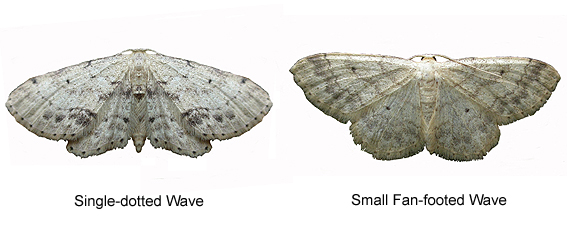 |
|
| .............. | ||
| The only
other moth likely to add to the identification confusion
is Treble Brown-spot (Idaea trigeminata), for
which there are no post-1990 Nottinghamshire records.
Only Single-dotted Wave is likely to be confused with
Treble Brown-spot though, with the latter species being
much more distinctly marked. Single-dotted Wave and Small Fan-footed Wave are both common and widespread moths in Nottinghamshire, sharing an almost identical range across the county. The two are usually trapped together at many sites and although both will occur in gardens, they are perhaps more regularly encountered in deciduous or mixed woodland. |
||
| 70.011 .... B&F 1708 .... Single-dotted Wave Idaea dimidiata (Hufnagel, 1767) |
Nottinghamshire status and distribution: A common and widespread moth in Nottinghamshire, with a range almost identical to that of Small Fan-footed Wave. Occurs in most habitat types, especially in woodland, but also found in suburban gardens. Flight period: Recorded between June and October, but the peak flight period is July to August. Identification features: Superficially resembles Small Fan-footed Wave, with which it can be misidentified by those new to moth trapping. The dark, partial outer cross-band is diagnostic and on worn/faded individuals, will often be the most prominent markings, along with the dots bordering the rear edges of the wings. Single-dotted Wave is also slightly smaller than Small Fan-footed Wave, although this will be more obvious when the two moths are compared side by side. |
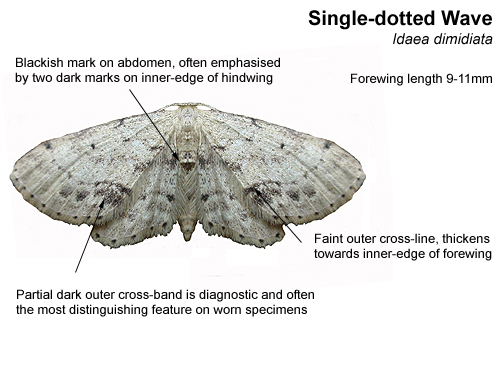 |
|
| .............. | ||
| A black mark on the abdomen is usually covered by the wings when at complete rest, but two pairs of dark marks on the inner-edge of the hindwings, are usually fairly obvious and characteristic of Single-dotted Wave. | ||
| .............. | ||
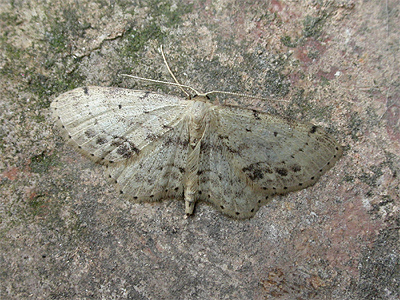 |
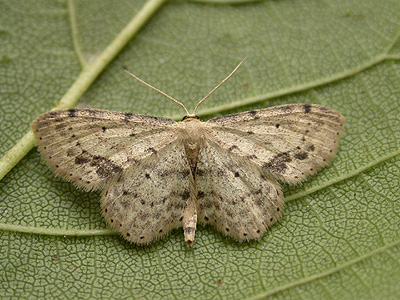 |
|
| 70.013 .... B&F 1702 .... Small Fan-footed Wave Idaea biselata (Hübner, 1799) |
Nottinghamshire status and distribution: Common across the whole of Nottinghamshire, and just as widespread as Single-dotted Wave. Occurs in both deciduous and mixed woodland, most rural sites and suburban gardens. At MV light, it is the more common of the two species. Flight period: Flies from late June to August, with a strong peak in occurring in July. In favourable years (2014) there can be a partial second generation flying in September and October. Identification features: Even on worn specimens, the black dots in the centre of all four wings are prominent identification features. There is usually a thin, jagged, dark outer cross-line, running through both forewings and hindwings and a complete dark outer cross-band. The intensity of the outer cross-band can vary considerably between individual moths. |
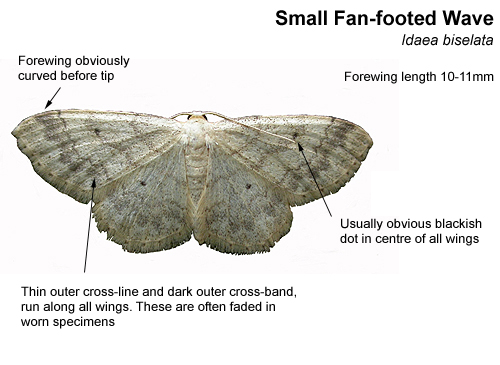 |
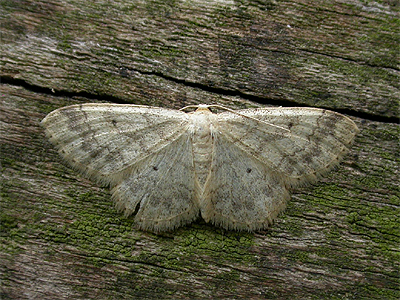 |
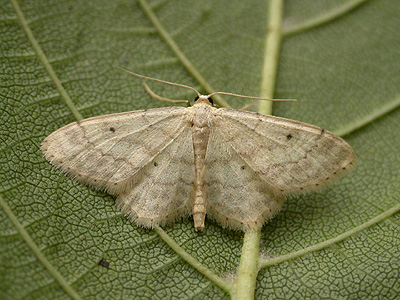 |